1959 - McCulloch's Entry into Kart Racing
Many of you already know that McCulloch officially entered into the kart racing
engine business in 1959 with the introduction of the MC-10. The following is an
article (slightly edited) that appeared in the Feb 1960 issue of "Quarter Midget
& Karting World" magazine. (The magazine transitioned later that year into
"Karting World", one of the most fondly remembered magazines from the early days
of karting.) The article, which highlights the tribulations of Mac's early years in the
business, is both historical and, in some ways, hysterical. Enough from me - here's
the article - Bob.
Part I: Kart Engine
Policy
The news filtering down through the karting grapevine across
the country has confirmed what we have already seen with our own eyes. There is no
question now that the McCulloch MC-10 engine clearly dominates the Super A and Super B
classes. And already the rumor mill is bubbling over whether McCulloch will put out a
similar engine for Modified A and perhaps other classes. These rumors stem from the many
kart people who don’t understand why McCulloch, in view of the success of the MC-10,
doesn’t quickly convert some of their other engine lines to kart use.
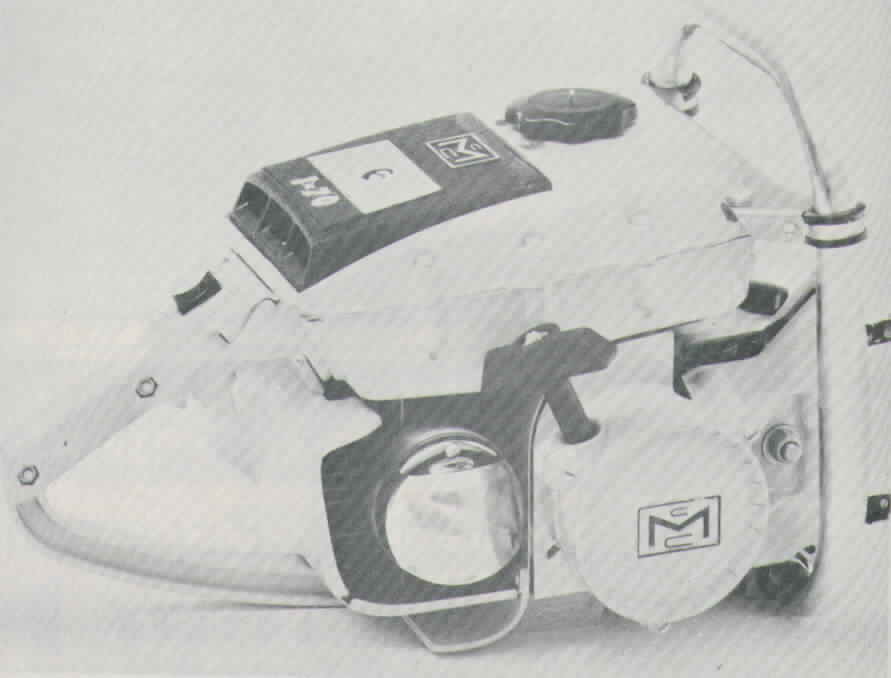
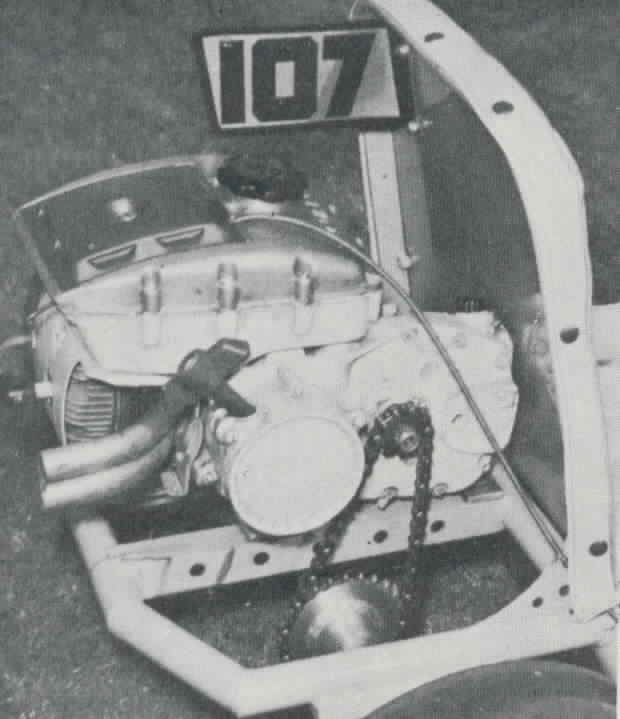
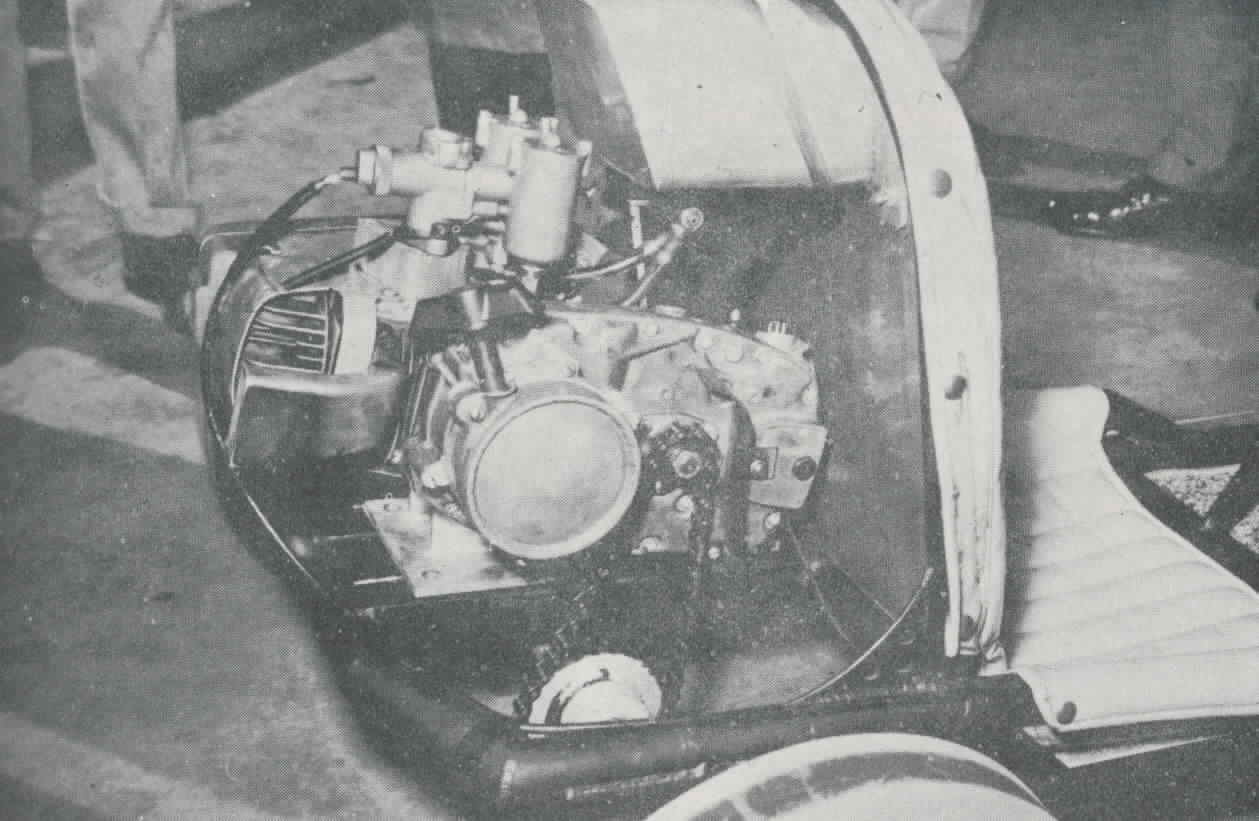
The McCulloch I-70 chain saw. Its Super 55A engine later became, with minor
changes, the MC-10. The middle image is what an adapted Super 55A
looked like mounted to a kart frame. Looks like homemade exhaust
header. In the 3rd photo, one of the first changes can be seen - the gas tank arrangement.
The old tank was cumbersome and restricted the air flow to the carburetor.
While this is an understandable assumption on the part of the karter,
it nevertheless reflects only one side of the story. It would seem wise, in the interest
of overall understanding, to give the manufacturer’s view point as we understand it.
What the karter fails to realize is that while karting is a
fast growing sport, it represents only a small drop in the McCulloch business bucket.
Let’s put it this way – McCulloch produces literally thousands of engines per
month, only a small fraction of which is earmarked for karting. The bulk of
McCulloch’s business continues to be the production of chain saw engines.
"There is no
question now that the McCulloch MC-10
engine clearly dominates the Super A and Super B classes."
Typical of any well established firm, McCulloch has a widespread network of wholesale
distributors. Each distributor has a franchised territory in which he seta up a number of
dealers to sell and service McCulloch chain saws. Each dealer, in turn, covers a specific
area as determined by the amount of sales and service in that area. Bear in mind that this
sales and service organization has been set up with the chain saw business in mind. Then
– whoosh – along comes the advent of our our little karts and the rapid
acceptance of McCulloch engines. This brings a new source of business for McCulloch
Motors. While any new business is a blessing, this blessing, like many, comes with strings
attached - problems of which the average karter is unaware. Let’s look at how some of
these problems came about and then speculate on their possible outcome.
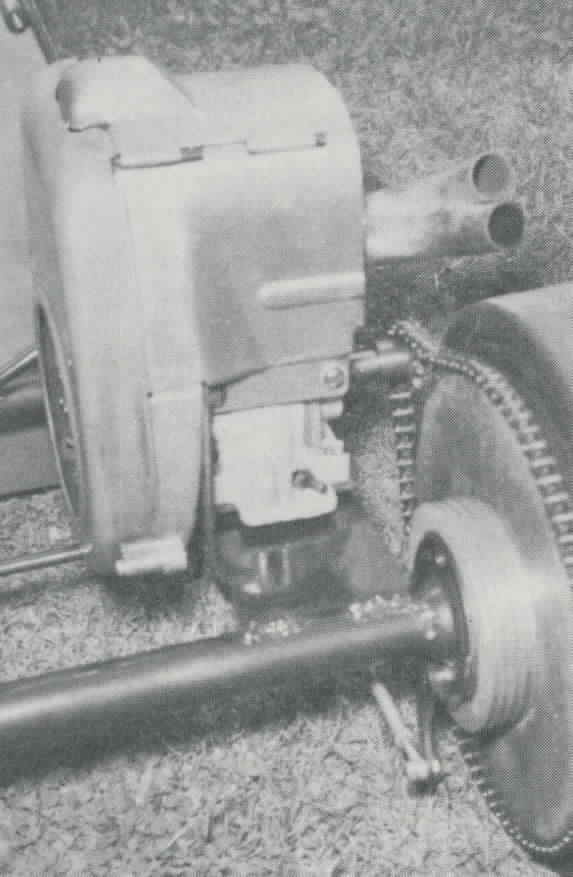
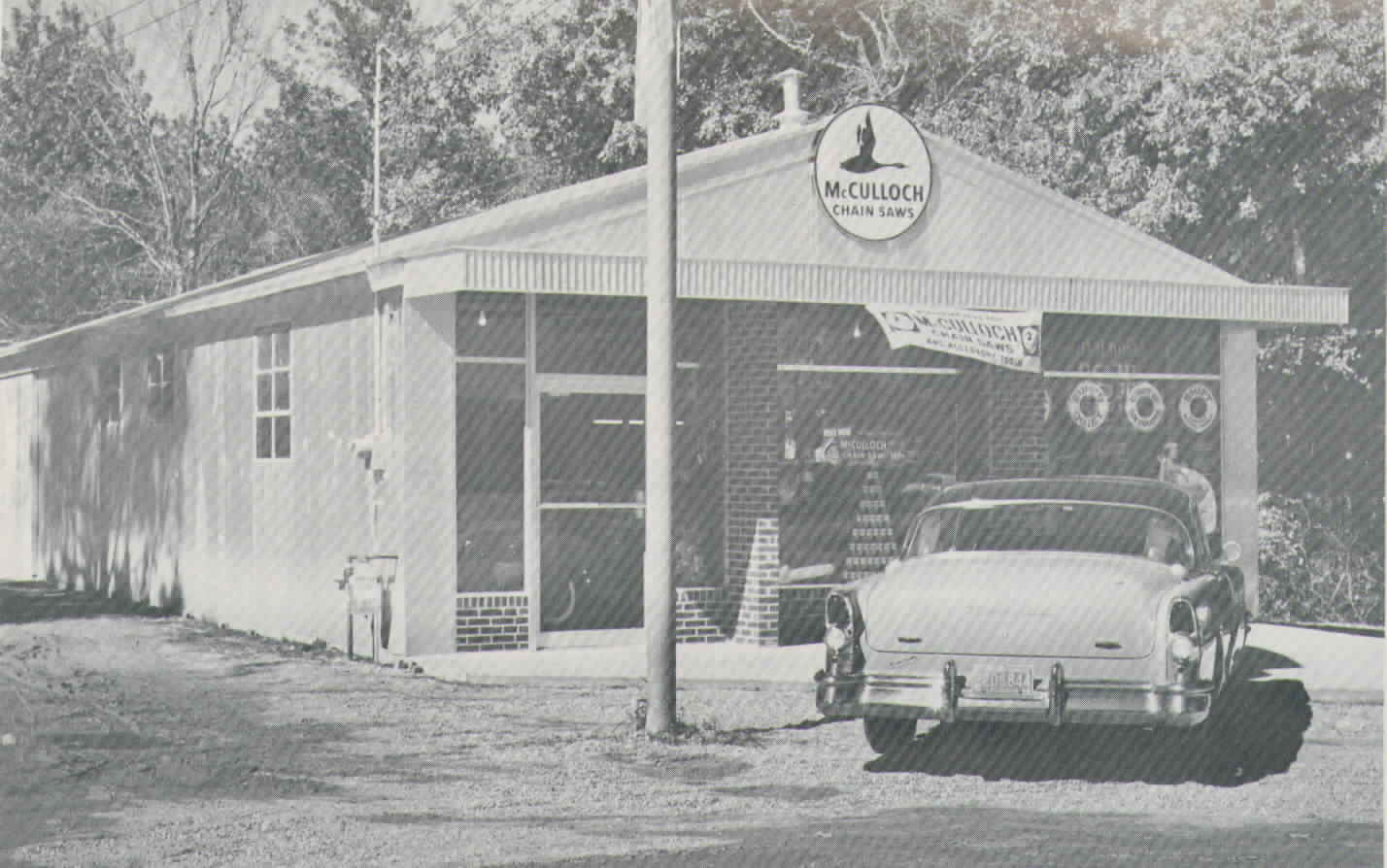
One of the first changes early users (of the Mac chainsaw engine) made was to
remove the transmission, clutch and recoil assembly.
The extra HP and reduced weight boosted this little kart to a quick win in its
class. This second pic shows a McCulloch chain saw
dealership complete with Buick parked in front.
At
first, the karter adapted the complete saw unit (less, of course, blade and chain) to his
little buzz-buggy. This was an expensive installation, but produced good results and the
karter was happy. Happy, that is, until he ran into a McCulloch powered kart in which the
chain saw unit had been stripped down to its essential component – the powerhead.
Gone were the transmission, clutch and housing, and gone too the power loss from the gear
train. This stripped down engine (indeed the forerunner of the MC-10) whipped everything
in its class including the other McCullochs. The clamor immediately went up for the
factory to produce and make available these powerhead units. To meet this demand almost
overnight, the factory was faced with several immediate problems. A new carburetor adaptor
had to be made (the old one was part of the gas tank) and the head, cooling shroud and fan
housing had to be diverted from the “44” engine line. Different packaging had to
be worked out, to say nothing of interrupting and changing the assembly lines to produce
these units. The McCulloch people took these problems in stride and soon the MC-10’s
were being distributed to kart manufacturers. McCulloch’s problems, however, had only
just begun
Go to Part 2, Sales, Service & Parts
Return to Vintage Karts Home




